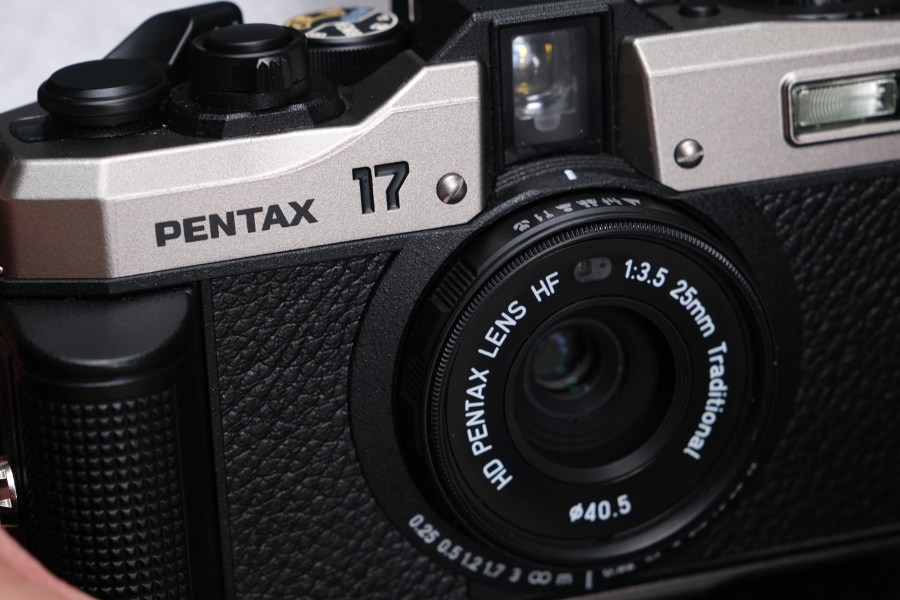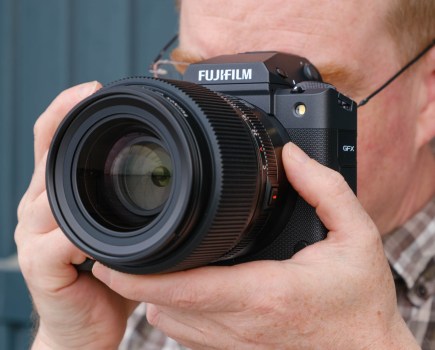Let’s face it, film photography is expensive these days: about $5/£5 for a roll of black & white, double that and more for colour print and over $25/£25 for a roll of colour slide film. Why do we bother? Perhaps it’s because we love the feel and operation of old film cameras. Maybe it’s the different look of a colour slide or a film-produced print compared to a digital image. Possibly, it’s comparable to the current upturn of interest in vinyl in the music world.
Whichever way you look at it, those who still enjoy film photography are hooked – and getting poorer by the day. So how about a way to halve film costs? The answer is to use a 35mm half-frame camera.
A bit of half-frame history
Although there were 35mm cameras before 1925, it was the first Leica launched that year that really made 35mm viable as a usable film format. Previously, 35mm had been used in the cine world where the film was run vertically through movie cameras and projectors with a frame size of 18x24mm.
When Leica designer Oskar Barnack conceived his new type of still photography camera, he adopted 35mm cine film for it, but ran the film through the camera horizontally and doubled the frame size to 24x36mm. Thus was born the standard 35mm format, still used in full-frame digital cameras today. When half-frame cameras came along, they halved the size again and reverted to the 18x24mm format, producing 72 exposures on a normal 36-exposure roll of film.
As far back as 1927, half-frame was used in the Ansco Memo camera, and continued in 1945 with the Universal Camera Corporation’s Mercury II. They were both American cameras. But it was Olympus in Japan who really kick-started the craze with the introduction of the first Pen camera, and other Japanese manufacturers were quick to jump on the bandwagon. Here’s a selection of half-frame models that are still usable today.
Which half-frame camera should you buy?
- Before buying, decide whether you want manual, partial or full automation.
- Many of these cameras are around 60 years old, so check for slow shutters, sticking apertures and stiff focusing.
- Beware of old selenium cell meters that might be dying and indicating the wrong exposure.
- When film is run through a half-frame camera horizontally in the conventional way, the image is in an upright portrait format, so turn the camera 90° for landscape-shaped images.
- Half-frame cameras that run the film vertically produce landscape-shaped images and therefore need to be turned 90° for portrait- shaped subjects.
- Because the image size is smaller than usual and will therefore need greater enlargement, either in a darkroom or when digitally scanning, compose carefully to cut out unnecessary detail around the main subject.
How to develop half-frame film
If you carry out your own developing and printing, processing half-frame is little different from full-frame. However, mono workers might like to use a finer-grain developer than usual such as Ilford Perceptol, and maybe equip their enlarger with a shorter-focal-length lens than the usual 50mm.
If you are using commercial processors, be sure to warn them that you have been shooting half-frame images. At best you’ll end up with a set of 36 prints with two different images on each, which then need to be cut in half.
At worst, the processor’s automatic film-cutting equipment will misjudge the spacing between images and start slicing into the picture. The best bet is to tell the processor to develop the film and to return it to you in a single strip without cutting. You can then scan the negatives to produce your own digital prints. As a rule of thumb, adjust the dpi setting on your scanner to double what you would normally use when scanning conventional 35mm images.
The best 35mm Half-Frame Film Cameras – our quick list
New half-frame film cameras
Secondhand half-frame film cameras
- Olympus Pen
- Olympus Pen EE
- Olympus Pen F
- Olympus Pen FT
- Canon Demi
- Canon Dial
- Konica Eye
- Konica Auto-Reflex
- Yashica Rapide
- Yashica Samurai
- Ricoh AutoHalf
- Loreo Stereo
Pentax 17

Amateur Photographer verdict
The newest camera on this list, the Pentax 17 is a great option… if you can stomach the price.- Auto and manual shooting options.
- Lightweight.
- Easy to use.
- Half-frame – get more out of your film.
- Expensive.
- Plastic feel and toy-like.
- Zone focus isn’t always reliable.
- Launched: 2024.
- Guide price: $500 / £499.99
Launched in June 2024 at a RRP of $500 / £499.99, the Pentax 17 is not only the first new 35mm film camera released by Pentax in almost two decades, but also their first half-frame concept with inspired and redesigned elements from previous cameras in their lines, like the lens from the PENTAX Espio Mini. It brings a modern twist to traditional design, with a clear aim to target the younger, trendy social media audience that craves the analogue nostalgia of film photography.
The Pentax 17 has a HD PENTAX HF 25mm f/3.5 Traditional fixed prime lens (37mm in full frame), with six different focus zones from 0.25m for close-ups through to infinity ∞ for wider landscapes (0.25m, 0.5m, 1.2m, 1.7m, 3m, ∞). The zone-focus system is manual, so when using you need to set it based on the estimated distance of your subject. In full auto mode, the camera is fixed focus and Program modes activate the zone focus.
Its ease of use and automated settings will likely be a big selling point for many people. As well as the snappers transitioning and using film for the fun and look of it, this camera is likely to suit many street photographers too.
Read our Pentax 17 review – is it seriously worth the money?
Kodak Ektar H35N
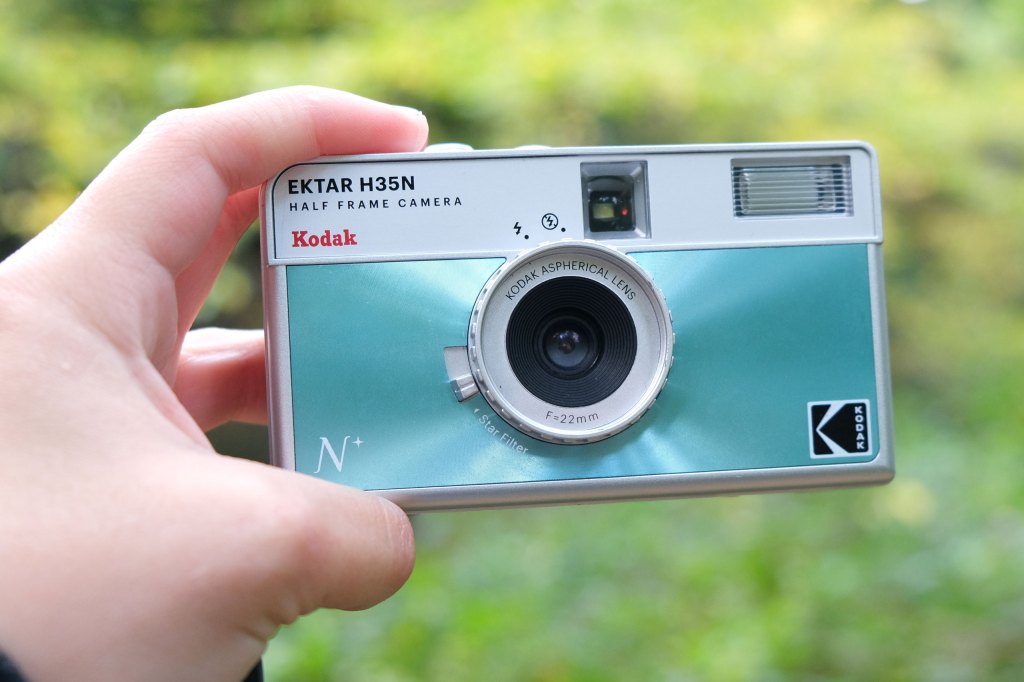
Amateur Photographer verdict
The Kodak Ektar H35N is a good entry-level film camera, one that has a few more tricks up its sleeve that make it a step up from disposable cameras.- Easy to use
- Compact body
- Clunky flash controls
- Launched: 2022 (H35), 2023 (H35N)
- Guide price: £50.28 / $64
Another new half-frame 35mm film camera is the Kodak Ektar H35N, which is licensed by Kodak but made by Retopro. The body is plastic, available in four colours, with a neat aluminium face plate. It’s a mechanical camera with fixed shutter speed, aperture and focus, but uses three AAA batteries to fire the inbuilt flash.
The H35, an earlier model released in 2022, can be found for a slightly cheaper price, but the H35N adds an improved glass lens, built-in starburst filer, a tripod bush and ‘B’ shutter setting for shooting long exposures.
Read our Kodak Ektar H35N Review.
Olympus Pen
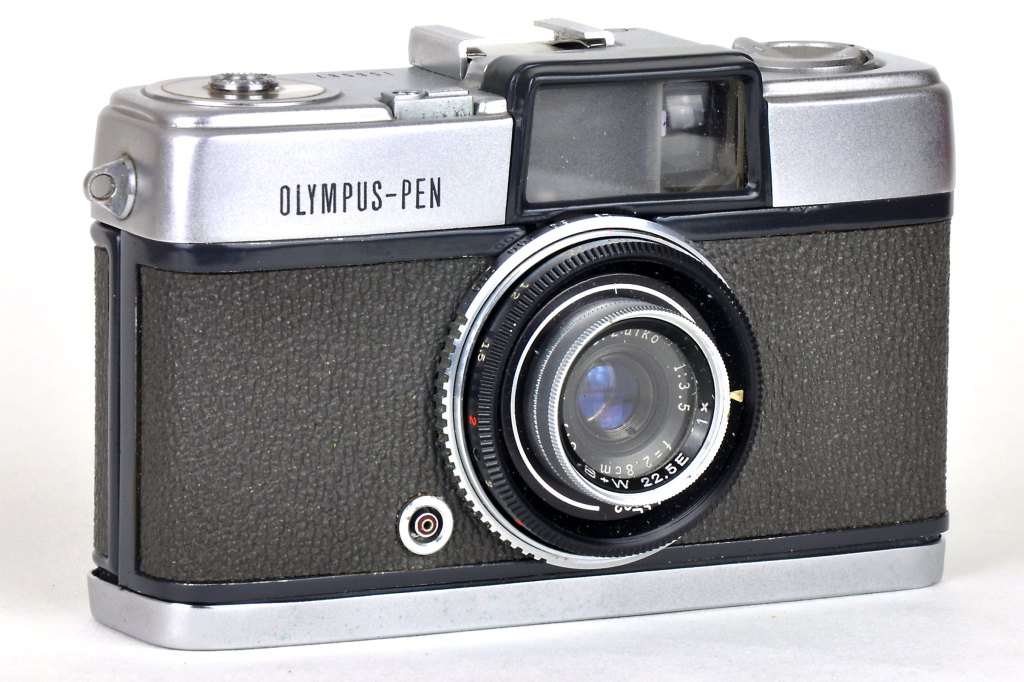
- Launched: 1959
- Guide price: £40-60
When camera designer Yoshihisa Maitani (the man behind the Olympus OM-1 and Olympus XA) suggested the half-frame format to Olympus, the firm wasn’t convinced it would be successful. So rather than tool up to produce the camera itself, the company outsourced production to subcontractor Sanko-Shoji. When the camera’s popularity became clear the firm brought production back in-house.
Measuring just 10×6.5x4cm – at the time one of the smallest models made to take a full-size 35mm cassette – the camera was claimed to be as easy to carry as a pen. Hence its name. The original Pen is entirely manual. It uses a Zuiko 28mm f/3.5 lens that stops down to f/22 using a ring around the lens. Surrounding that, another ring focuses the lens from 60cm to infinity, while a third outer ring sets shutter speeds of 1/25-1/200sec. Film is wound by a thumb wheel on the back. The viewfinder has a bright frame etched into it to indicate the lens’s field of view.
Ricoh Auto Half
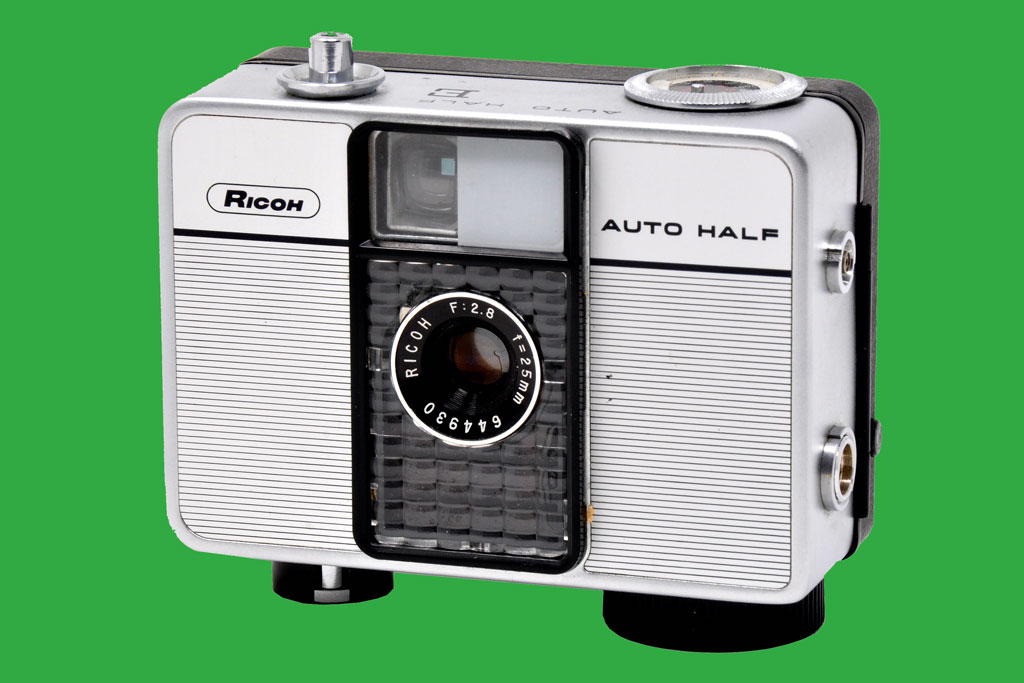
- Launched: 1960
- Guide price: $50-150/£30-50
Hot on the heels of the Pen, and while new models were being launched by Olympus, came the Ricoh Auto Half, a palm-size camera that adds a clockwork motor drive to wind the film after each exposure. With a fixed focus 25mm f/2.8 lens, the first model offers 1/125sec for daylight shooting and 1/30sec for flash, with apertures measured and automatically controlled by a selenium photo cell meter around the lens. Apertures can also be adjusted manually for flash photography. A dozen or so upgrades followed with only slightly different specifications.
Olympus Pen EE
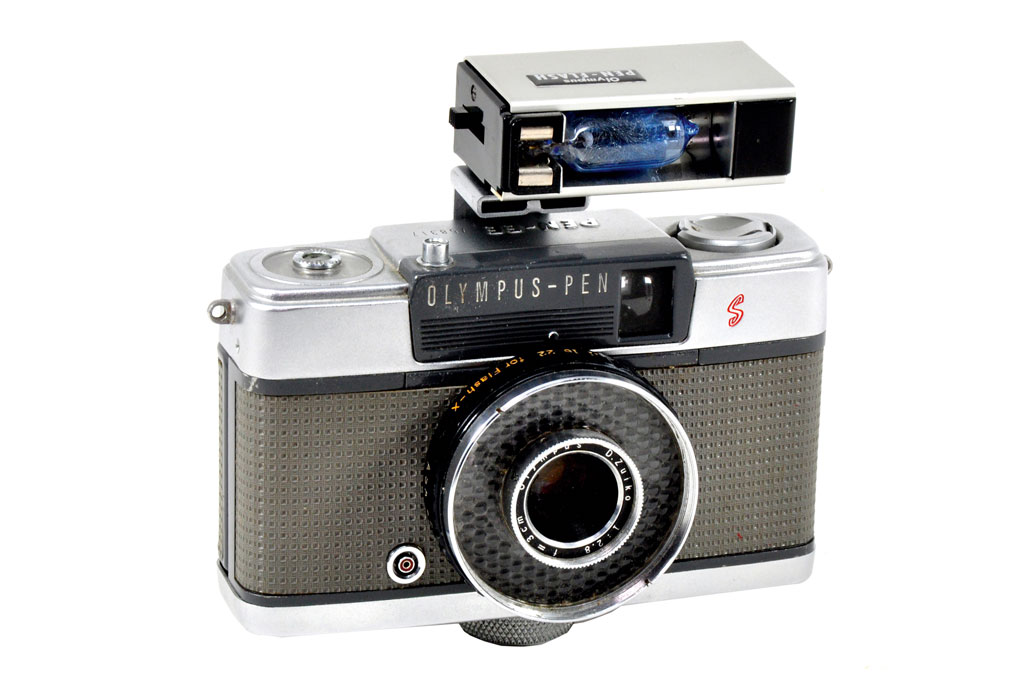
- Launched: 1961
- Guide price: $50-130/£50-80
Following the success of the first Olympus Pen, subsequent years saw the launch of a vast range of variations on the original theme, many with only minor spec changes: faster shutter speeds, wider maximum apertures, wider lens focal lengths, even cameras to take the Agfa Rapid cassette system. Of these, the Pen EE, whose initials stand for Electric Eye, is worth singling out.
Unlike most other Pen cameras, the EE models are true point-and-shoot models, characterised by a selenium meter cell that surrounds the lens. In dim light, the shutter sets itself at 1/40sec and apertures are automatically set between f/3.5 and f/8. In brighter light the shutter defaults to 1/200sec and automatically-set apertures range from f/4.5 to f/22. Focus is fixed.
In 1962 the Pen EE2 added a zone focusing lens. Other half-frame Olympus cameras include the Pen S2.8, S3.5, D, D2, D3, W (for wide), EM, EES, Rapid EED, EE-EL, EES-EL, EED, EES2, EE-2, EE-3 and EF.
Olympus Pen F
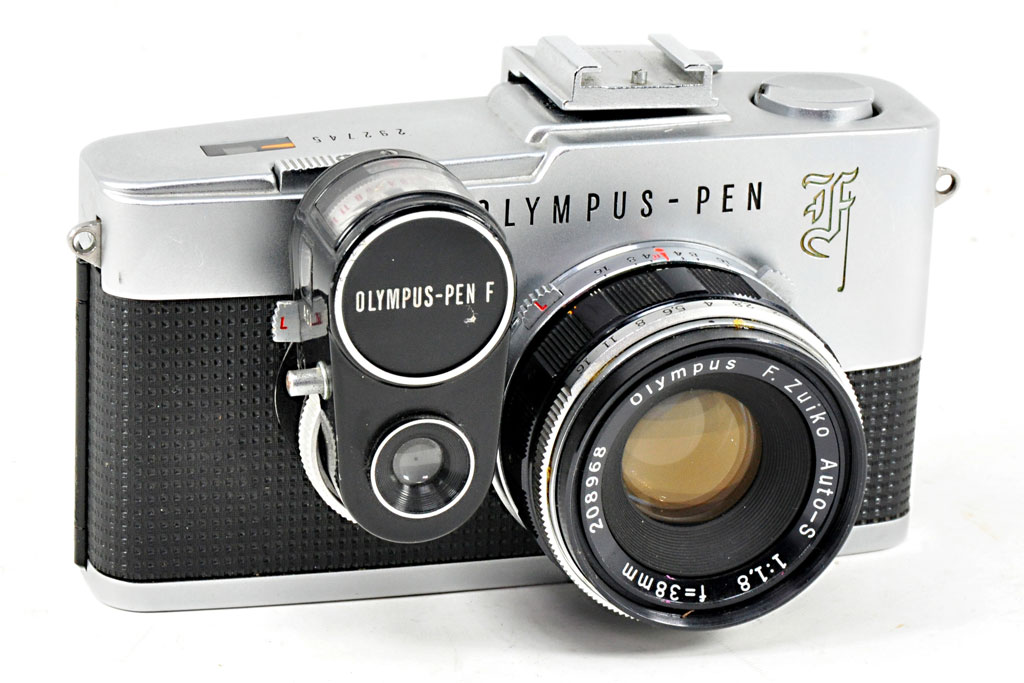
- Launched: 1963
- Guide price: $100-300/£150-200
Not content with introducing the first Japanese half-frame camera, Olympus went on to produce the world’s first half-frame single lens reflex (SLR). Typically found with a Zuiko 38mm f/1.8 standard lens, the Pen F has access to a large range of interchangeable lenses from 20mm wideangle to 800mm catadioptric telephoto. Most of the accessories that you expect to go with a full-frame SLR can also be found for the Pen F.
At 12x7x6cm, the camera is almost as pocketable as the Pen, thanks in part to the way the traditional pentaprism found in most SLRs is replaced by a system of mirrors. They offer an unusual light path to reflect light sideways from the reflex mirror behind the lens to a focusing screen, both mounted vertically, and onwards to the viewfinder. On exposure, the reflex mirror moves from side to side rather than with the traditional up and down movement.
Film wind takes two strokes of the lever, otherwise the shutter won’t fire. Exposure control is manual, but the shutter speed dial on the front of the Pen F can be adapted with a coupled meter to display suggested apertures against manually set shutter speeds.
Canon Demi
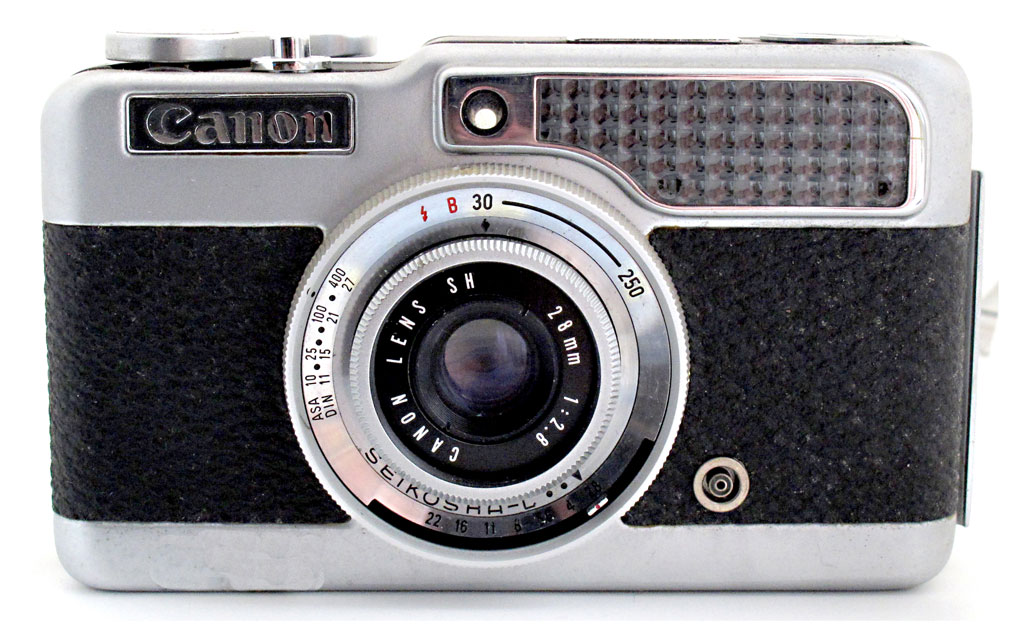
- Launched: 1963
- Guide price: $50-90/£50-80
Canon entered the half-frame world by adopting the French word for ‘half’ and introducing the Demi. The first model has a direct vision viewfinder, five-element 28mm f/2.8 lens and an in-built selenium meter that measures and sets exposure in a kind of manual programmed way. First the film speed is set. Then a ring around the lens is rotated until two needles viewed in a window in the top plate coincide, at which point the camera has chosen an appropriate shutter speed and aperture combination. Although it isn’t indicated, this could be anything between 1/30sec at f/2.8 and 1/250sec at f/22.
For a little more manual control, the shutter speed can be set to its flash sync setting of 1/30sec and then apertures manually selected on a ring around the lens. Following the first Demi, later models included the Demi II, S, C, EE17, EE28 and Rapid.
Canon Dial

- Launched: 1963
- Guide price: $20-50/£30-60
One strange foray into the half-frame world came with the arrival of the Canon Dial which takes its name from the ten round windows surrounding the lens, making it resemble an old-fashioned telephone dial. This is another half-frame camera with a built-in clockwork motor drive to advance the film one frame after each exposure. It is wound by a stubby handle on the base.
Behind each of the windows surrounding the lens there is a different-sized aperture. Turning a milled ring around the lens to select a film speed, rotates these apertures in front of a meter cell – making it more, or less, sensitive. A shutter speed of 1/30-1/250sec is set on an outer ring around the lens and the automation then selects and sets the correct aperture. Focusing is controlled by a lever above the lens against set distances, designated by a needle moving across zone focusing marks in the viewfinder.
Konica Eye
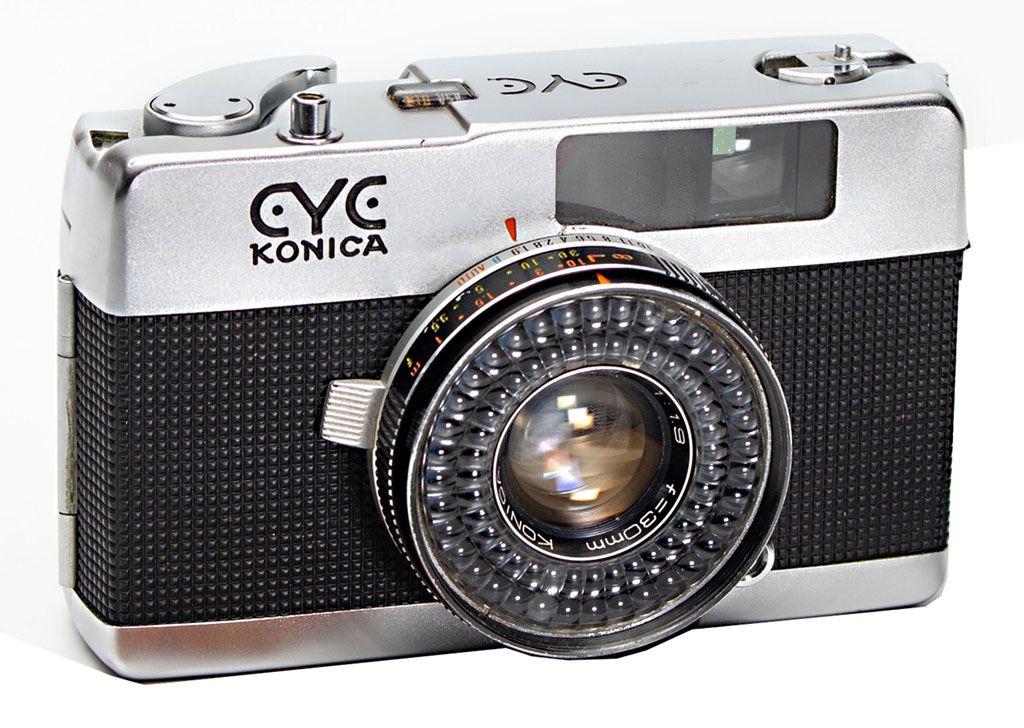
- Launched: 1964
- Guide price: $120-220/£120-160
Somewhat resembling an Olympus Trip with a circular selenium photo cell surrounding the lens, the Konica Eye offers an unexpectedly large-aperture 30mm f/1.9 lens focused by four click-stopped settings. Set to its auto mode by a ring around the lens, exposure is programmed between 1/8sec at f/1.9 and 1/800sec at f/16.
Later updates like the Eye 2 and Eye 3 added CdS metering and Konica continued to launch half-frame cameras into the 1980s. The Eye was copied by the Russians to make the Fed Mikron, which was launched as late as 2015.
Yashica Rapide
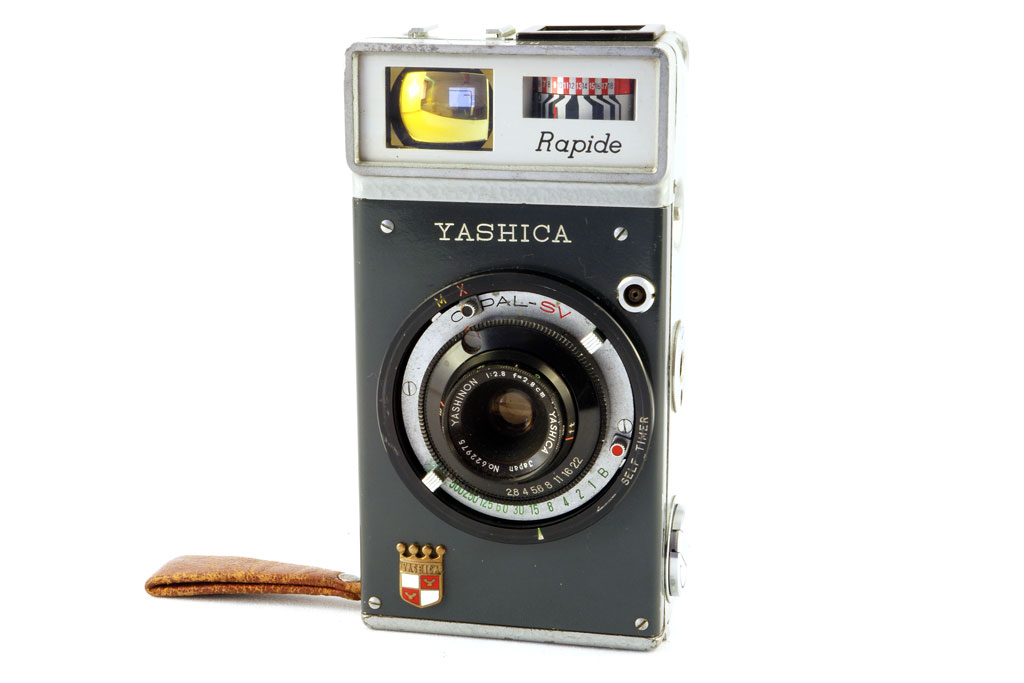
- Launched: 1964
- Guide price: £200-250
Many cameras had built-in exposure meters, but this one is more like an exposure meter with a built-in camera. The shape of a flat box, the meter cell is situated on one of the narrow sides with a needle that is deflected across a scale on the flat side of the body. Once the meter reading has been taken and the exposure set by means of exposure value numbers, the camera is turned into either a vertical or horizontal position to take the picture. Film advance is by pulling the wrist strap attached to a lever that slides out from the body, moving the film as it goes. A similarly designed camera called the Sequelle, also from Yashica, added a battery-driven motor drive.
Olympus Pen FT

- Launched: 1966
- Guide price: $90-370/£200-250
The original Pen F was upgraded in the FT model to add a self-timer, single stroke film advance and a microprism focusing screen in the viewfinder. More importantly it also adds open-aperture through-the-lens (TTL) exposure, courtesy of an inbuilt CdS meter. With a suitable shutter speed selected, a meter needle in the viewfinder indicates a number from zero to seven, which is then set manually on the lens. It was felt that this was easier for the novice to understand than traditional apertures which, for the purist, are also shown on the opposite side of the lens.
The downside of the added automation is that the metering works by use of a semi-silvered mirror to split light from the lens two ways, some to the meter cell and the rest to the viewfinder. The result is a dimmer viewfinder image than that on the original Pen F. The Pen FV, launched the following year, was basically a Pen FT with the meter removed and the brighter viewfinder reinstated.
Konica Auto-Reflex

- Launched: 1966
- Guide price: $40-120/£125-150
What appears at first to be a conventional 35mm SLR is actually a full-frame camera with the option of taking half-frame pictures, a mixture of the two formats combined on the same roll of film if needed. Switching a lever on the top plate from its ‘Full’ to ‘Half’ setting slides two masks across the film plane to reduce the image size from 24x36mm to 18x24mm while, at the same time, the film wind gearing changes to wind only half a frame at a time, and the exposure counter moves to the next number with every other wind of the lever. Two vertical lines etched into the viewfinder give the half-frame field of view.
Aside from the full- or half-frame function, the Auto-Reflex is also the world’s first focal plane shutter 35mm SLR with auto exposure and interchangeable lenses. Shutter speeds and apertures can be set manually, but turn the aperture ring to its ‘EE’ setting and 1-1/1,000sec shutter priority auto exposure kicks in, by use of a meter attached to the speed dial on the front of the body. Power for the meter originally came from a now-unavailable PX675 mercury cell, replaceable today by an LR44 or equivalent battery.
The standard lens when shooting in the full-frame option is a 52mm f/1.8 Hexanon, which becomes more like a medium telephoto with half-frame.
Yashica Samurai

- Launched: 1987
- Guide price: $80-130/£60-80
This was a very late contender in the half-frame world, launched at the start of the craze for 35mm bridge cameras and resembling a small camcorder. Using a 2CR5 battery, the 25-75mm f/3.5-4.3 lens zooms at the touch of a toggle switch, a flashgun pops up above the lens, programmed exposure is automated with shutter speeds of 2-1/500sec and film wind is motorised. The first Samurai was the X3.0, but the range continued with the X4.0 and the slightly smaller Z and Z2 models.
Loreo Stereo camera

- Launched: c.2000
- Guide price: $40-170/£30-40
For something completely different, here’s a stereo camera that takes twin half-frame images side by side on a standard 35mm frame. Have the film processed in the conventional way and you’ll get a set of normal-size prints, each with a stereo pair on it. These can be viewed to give a 3D image using a special Loreo viewer.
The camera, which can regularly be found with its viewer second-hand on eBay, is little more than a snapshot model with fixed aperture, shutter speed and focus. Pressing a catch on the back flips up a reflector which deflects light forward from an upward-facing flashgun
in the top of the body.
Related content:
Follow AP on Facebook, Twitter, Instagram, YouTube and TikTok.

